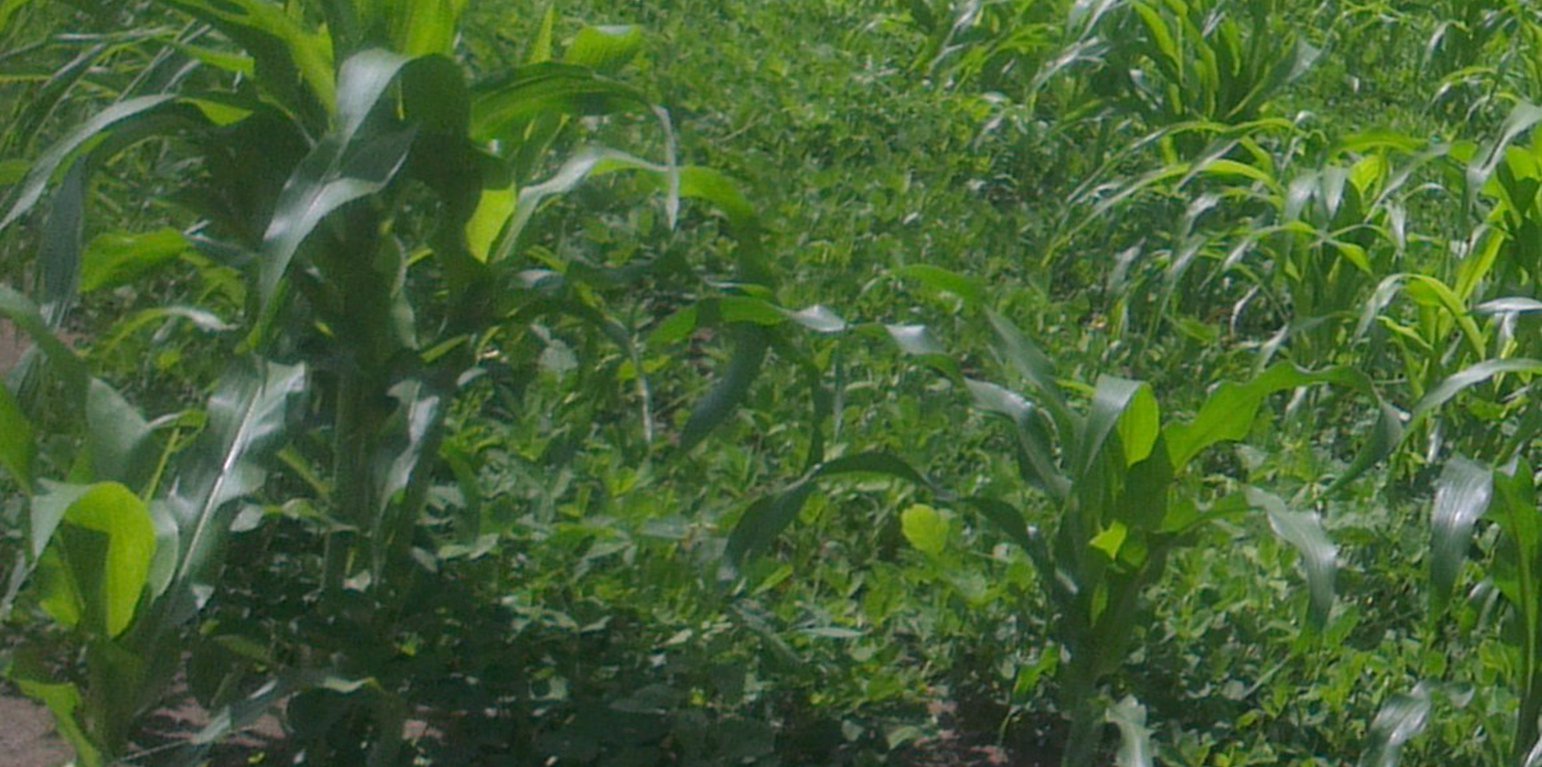



The International Institute of Tropical Agriculture (IITA) has been promoting smart intercropping patterns in Nwoya District, Northern Uganda. The inter crops promoted are based on maize-legume sustainable intensification farming systems with focus on conservation farming as a technology. This technology is promoted because it reduces management inputs costs such as labour for weeding and application of fertilizers which results into sustainable systems and if efficiently used to potentially replenish natural resources.The demonstration/ trial is located in Alero Sub County, Nwoya District, which on average receives 1200 mm of rainfall annually established on a reddish soil with relatively low soil organic matter on a plot size of 180 m2 planted with groundnuts as the major crop spaced at 30cm×10cm and maize intercrop at a spacing of 225 cm×60cm, such that within every 5 lines of groundnuts one line of maize is planted.
The groundnuts (local red variety called red beauty) are locally obtained from the nearby local market, while the maize is an open pollinated variety (Longe 5) bought from the local agro input dealer. The inter crop was planted to increase productivity and reduce the risk of total crop failure.
Prior to establishment, Riber farmers group selected a site close to the road to act as there demo/plot.The plot was slashed, sprayed with glyphosate and then marked using 60-cm pegs to get the correct spacing and proper plant population. Ground nuts were planted first then the maize planted a fortnight later using the following inputs 3 kg of maize bought at UGX 1500, 15 kg of groundnuts bought at UGX 5000 and 1 litre of liquid fertiliser at UGX 15000 and 1 litre of glyphosate bought at UGX 20,000.
Inter cropping is majorly preferred by farmers because it enhances maximum utilization of land, reduces risk of total crop failure, and increases income and food security. It also acts as a means of weed management. In some inter cropping systems, the legumes act as soil cover and fix atmospheric nitrogen in the soil, and promote product diversity for food security and income generation.
However weeding an inter crops is challenging compared to weeding a pure stand and encourages competition for resources such as soil nutrients, moisture and light, which may affect crop productivity. Its therefore recommend that the farmer keep in touch with the extension worker for advisory services ( proper management, pests and diseases management)
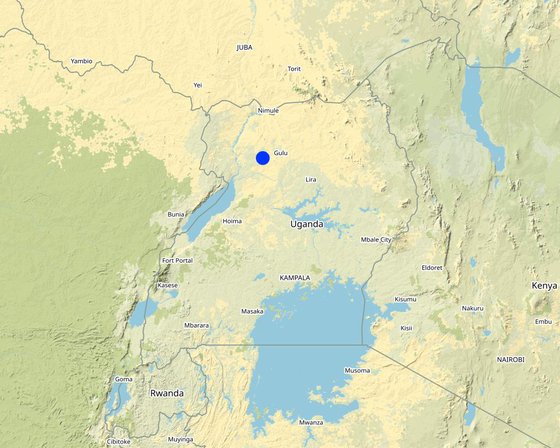
สถานที่: Bwobo nam, Alero Sub-county,Nwoya District, Northern Uganda, ยูกันดา
ตำนวนการวิเคราะห์เทคโนโลยี: พื้นที่เดี่ยว
การเผยแพร่ของเทคโนโลยี: กระจายไปอย่างสม่ำเสมอในพื้นที่ (approx. < 0.1 ตร.กม.(10 เฮกตาร์))
In a permanently protected area?:
วันที่ในการดำเนินการ: 2016; น้อยกว่า 10 ปี (ไม่นานนี้)
ประเภทของการแนะนำ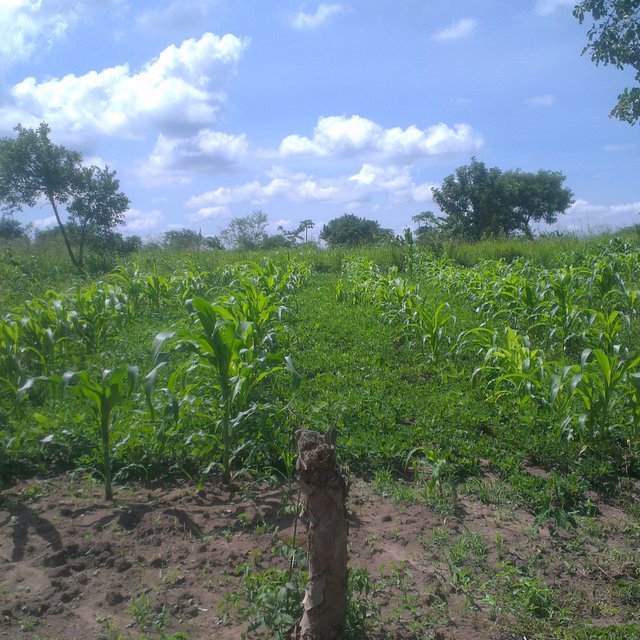
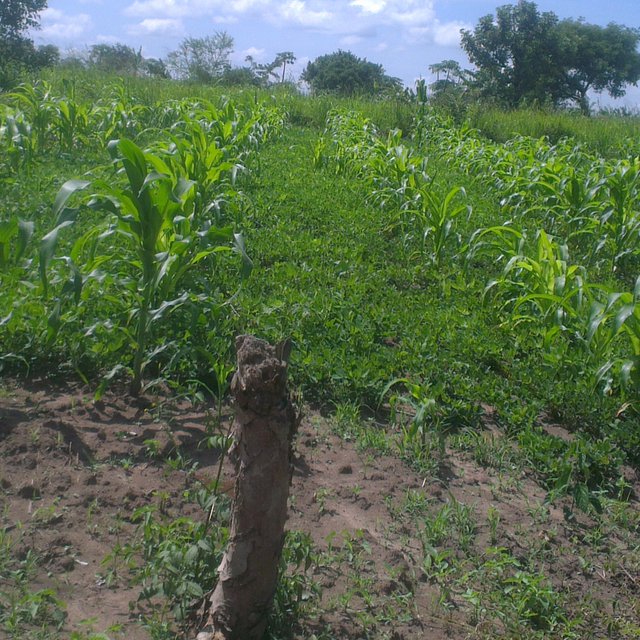





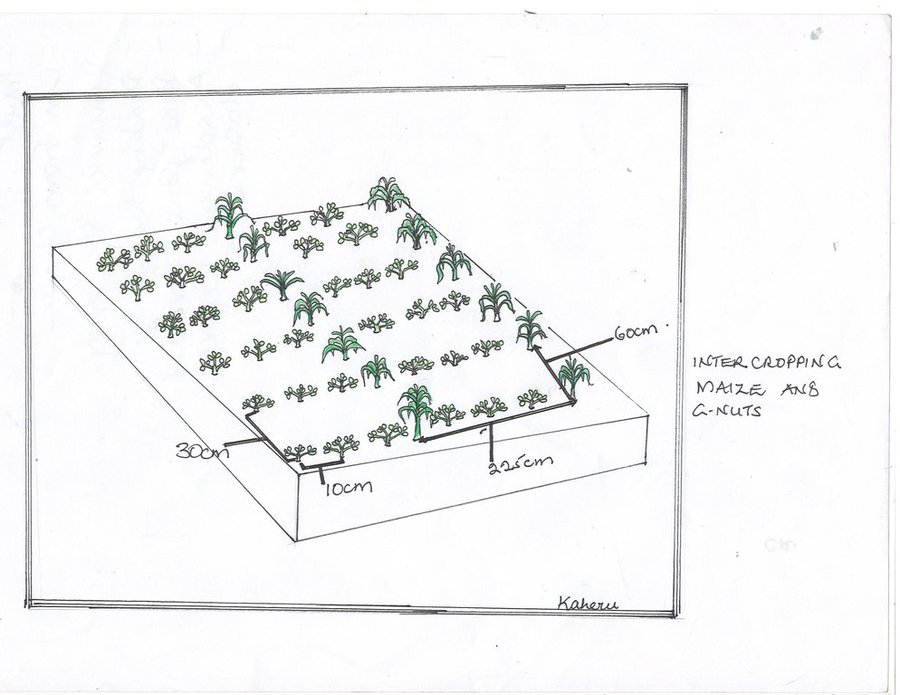
| ปัจจัยนำเข้า | หน่วย | ปริมาณ | ค่าใช้จ่ายต่อหน่วย (UGX) | ค่าใช้จ่ายทั้งหมดต่อปัจจัยนำเข้า (UGX) | %ของค่าใช้จ่ายที่ก่อให้เกิดขึ้นโดยผู้ใช้ที่ดิน |
| แรงงาน | |||||
| Slashing | People | 15.0 | 3000.0 | 45000.0 | 100.0 |
| Ploughing | People | 15.0 | 3000.0 | 45000.0 | 100.0 |
| Field Marking | People | 15.0 | 3000.0 | 45000.0 | 100.0 |
| Planting | People | 15.0 | 3000.0 | 45000.0 | 100.0 |
| อุปกรณ์ | |||||
| Strings | Piece | 1.0 | 8000.0 | 8000.0 | 100.0 |
| Planting Pegs | bundle | 2.0 | 5000.0 | 10000.0 | 100.0 |
| Tape Measure | Piece | 1.0 | 25000.0 | 25000.0 | 100.0 |
| วัสดุด้านพืช | |||||
| Groundnuts | kg | 15.0 | 2500.0 | 37500.0 | 100.0 |
| Longe5 (maize) | kg | 3.0 | 1500.0 | 4500.0 | 100.0 |
| ปุ๋ยและสารฆ่า/ยับยั้งการเจริญเติบโตของสิ่งมีชีวิต (ไบโอไซด์) | |||||
| Liquid fertiliser (DI grow) | Ltr | 1.0 | 15000.0 | 15000.0 | 100.0 |
| ค่าใช้จ่ายทั้งหมดของการจัดตั้งเทคโนโลยี | 280'000.0 | ||||
| ปัจจัยนำเข้า | หน่วย | ปริมาณ | ค่าใช้จ่ายต่อหน่วย (UGX) | ค่าใช้จ่ายทั้งหมดต่อปัจจัยนำเข้า (UGX) | %ของค่าใช้จ่ายที่ก่อให้เกิดขึ้นโดยผู้ใช้ที่ดิน |
| แรงงาน | |||||
| Weeding | people | 15.0 | 3000.0 | 45000.0 | 100.0 |
| spraying | people | 1.0 | 3000.0 | 3000.0 | 100.0 |
| อุปกรณ์ | |||||
| knapsacks sprayer | Piece | 1.0 | 55000.0 | 55000.0 | 100.0 |
| ค่าใช้จ่ายทั้งหมดของการบำรุงรักษาสภาพเทคโนโลยี | 103'000.0 | ||||